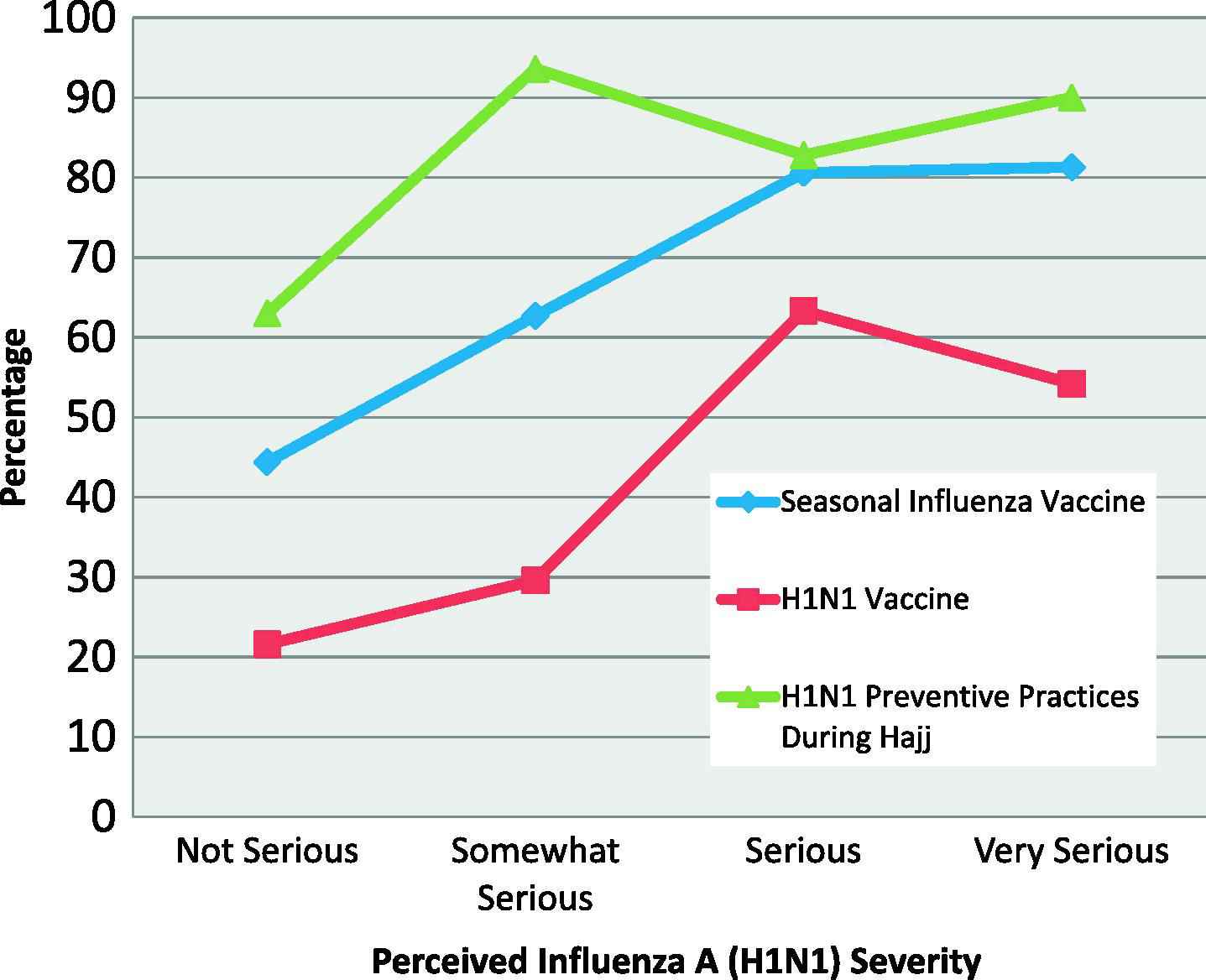Predictors of protective behaviors among American travelers to the 2009 Hajj
- DOI
- 10.1016/j.jegh.2013.08.001How to use a DOI?
- Copyright
- © 2013 Published by Elsevier Ltd. on behalf of Ministry of Health, Saudi Arabia.
- Open Access
- This is an open access article under the CC BY-NC-ND license (http://creativecommons.org/licenses/by-nc-nd/4.0/).
The recent emergence of the Middle East Respiratory Syndrome (MERS) has brought renewed attention to the possibility of rapid international dissemination of respiratory disease from the Hajj [1]. The 2009 Hajj occurred during the influenza A (H1N1) pandemic, which also prompted public health officials to place an increased emphasis on mitigating the potential spread of respiratory disease [2].
One hundred eighty-six (186) American Hajj pilgrims were administered pre- and post-travel surveys [3]. A previous analysis assessed predictors of respiratory illness among this population of Hajj travelers [3]. A follow-up analysis was conducted to identify factors associated with three recommended influenza A (H1N1)-related health practices and behaviors: receiving seasonal influenza vaccination, receiving influenza A (H1N1) vaccination, and engaging in recommended H1N1 protective behaviors during the Hajj.
In a multivariable linear regression model, greater perceived H1N1 severity (β = .22, p = .009) was a significant association of influenza A (H1N1) knowledge. Higher levels of H1N1 knowledge (β = .23, p = .01) were a significant association of perceived influenza A (H1N1) severity.
Perceived H1N1 severity (OR = 1.74, 95%CI = 1.14–2.62, p = .01) was a significant predictor of receiving a seasonal influenza vaccine (Fig. 1).

Perceived H1N1 severity and health practices (seasonal influenza immunization, influenza A [H1N1] immunization, and engaging in protective behaviors during Hajj).
Greater perceived H1N1 severity (OR = 2.02, 95%CI = 1.35–3.02, p = .001) was a significant predictor of receiving an influenza A (H1N1) vaccine (Fig. 1).
The most frequently reported protective behaviors were hand hygiene (n = 125, 86.2%), wearing a face mask (n = 91, 62.8%), cough etiquette (n = 86, 59.3%), social distancing (n = 64, 44.1%), and contact avoidance (n = 45, 31.0%). In a multivariable logistic regression model, greater perceived severity of H1N1 (OR = 1.62, 95%CI = 1.00–2.63, p = .003) was a significant predictor of engaging in protective practices during the Hajj (Fig. 1).
Knowledge of influenza A (H1N1) symptoms, transmission, and prevention was associated with greater perceived severity of influenza A (H1N1); and perceived H1N1 severity was associated with engaging in all three protective health practices assessed in the survey (seasonal influenza vaccination, influenza A [H1N1] vaccination, and engaging in H1N1 protective behaviors during the Hajj). These results are consistent with behavioral science theories that the impact of health information is mediated by underlying beliefs that can either facilitate or discourage the adoption of health behaviors [4].
Future research should focus on prospective studies of predictors of particular behaviors. If knowledge, attitudes and practices (KAP) were assessed using reliable, consistent instruments prior to, during, and after travel to mass gatherings, it would be possible to determine which factors predict protective behaviors. In addition, it will be important to carry out observational and behavioral studies of actual protective behaviors during mass gatherings. Understanding the barriers to and facilitators of vaccine uptake and compliance with recommended behaviors among Hajj pilgrims could provide insights that would help prepare for future pandemics.
References
Cite this article
TY - JOUR AU - V. Balaban AU - W. Stauffer AU - A. Hammad AU - M. Afgarshe AU - M. Abd-Alla AU - Q. Ahmed AU - Z. Memish AU - J. Saba AU - E. Harton AU - G. Palumbo AU - N. Marano PY - 2013 DA - 2013/10/11 TI - Predictors of protective behaviors among American travelers to the 2009 Hajj JO - Journal of Epidemiology and Global Health SP - 189 EP - 190 VL - 3 IS - 4 SN - 2210-6014 UR - https://doi.org/10.1016/j.jegh.2013.08.001 DO - 10.1016/j.jegh.2013.08.001 ID - Balaban2013 ER -
